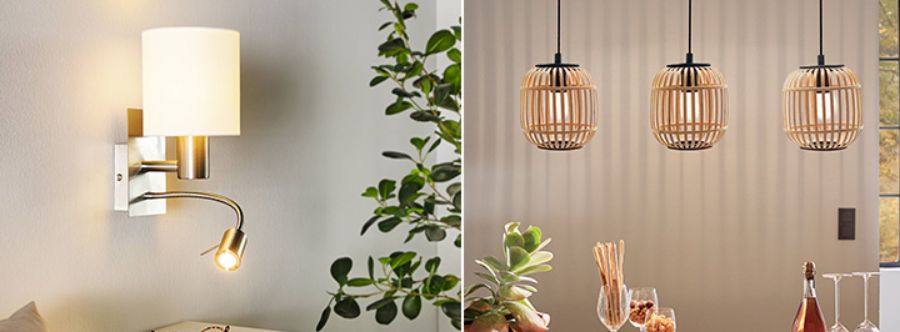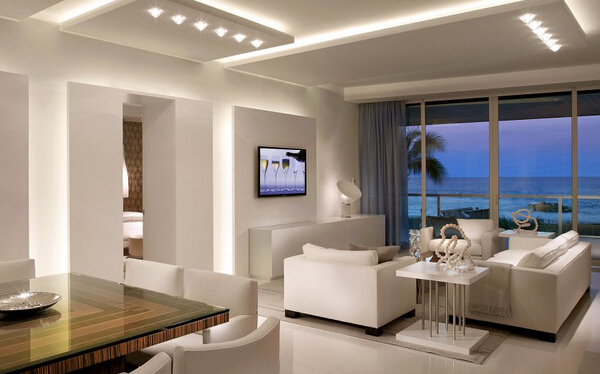
Lighting or illumination is the intended use of light to achieve practical or aesthetic effects. Lighting includes the use of both artificial light sources like lamps and light fixtures, as well as natural illumination by capturing daylight. Lighting is the means to express the desired character of a space. Lighting is a general term that refers to the process of illuminating a home, workplace, or street to make it livable through different technologies.
Indoor Lights:
Indoor lights can also create a desired atmosphere, enhance the appearance of the space, and provide a sense of comfort and security. Indoor lighting can be achieved through various sources such as bulbs, fluorescent lights, LED lights, and natural light sources such as windows and skylights. There are three main types of lighting in interior design: ambient, task, and accent lighting.

Light Up Your Life: A Advise to Indoor Lighting
We often take it for granted, flicking a switch and bathing a room in light. But indoor lighting is more than just illumination; it's a powerful tool that can set the mood, increase functionality, and even impact our well-being. In this blog, we'll delve into the wonderful world of indoor lighting, helping you transform your space from ordinary to extraordinary.
The Magic of Layers
Think of indoor lighting not as a single entity, but as a layered masterpiece. Here are the key players:
- Ambient Lighting: This is your general room illumination, often provided by overhead fixtures like chandeliers or recessed lights. Choose warm white LEDs for a cozy feel or cooler tones for a more energetic space.
- Task Lighting: Focus on specific areas like your workspace or kitchen counter with task lighting. Desk lamps, under-cabinet lights, and pendant lights are all great options.
- Accent Lighting: Highlight structural features or artwork with accent lighting.
1. Lighting for Life
Beyond aesthetics, lighting can impact our mood and even our sleep patterns. Consider these factors:
- Dimmers: Create a relaxing ambiance by dimming the lights in the evening.
- Smart Lighting: Control your lights with your voice or phone for ultimate convenience and create automated lighting schedules.
- Natural Light: Maximize natural light by keeping windows clear and using strategically placed mirrors.
2. Choosing the Right Fixtures
When selecting lighting fixtures, consider both functionality and aesthetics. Here are some tips to guide your choices:
Match the Style of Your Home Your lighting fixtures should complement your home's decor. For instance, a modern chandelier might look out of place in a rustic farmhouse kitchen. Choose a contest that blends seamlessly with your existing design elements.

Imagine the Room's Function Different types of rooms have different lighting needs. A kitchen requires bright, task-oriented lighting, while a living room benefits from a mix of ambient and accent lighting to create a cozy atmosphere.
Pay Attention to Scale Ensure your lighting fixtures are appropriately sized for the room. A large chandelier might overpower a small dining room, while tiny pendant lights could get lost in a spacious living area.
Think About Layering Layering your lighting means combining ambient, task, and accent lighting to create a versatile and adaptable lighting scheme. This approach allows you to adjust the lighting to suit different activities and moods.
3. Bulbs and Color Temperature
The type of bulb you choose and its color temperature can significantly impact the ambiance of a room.
Types of Bulbs
- LED: Energy-efficient and long-lasting, LEDs are available in a comprehensive of color temperatures and styles.
- CFL: Compact fluorescent bulbs are also energy-efficient but take a few moments to reach full brightness.
- Incandescent: These bulbs provide a warm, familiar light but are less energy-efficient and have a shorter lifespan.
- Halogen: Offering bright, white light, halogen bulbs are more efficient than incandescent but can get very hot.
Color Temperature Measured in Kelvins (K), color temperature ranges from warm to cool:
- Warm White (2700K-3000K): Creates a cozy, inviting atmosphere. Ideal for living rooms and bedrooms.
- Neutral White (3500K-4100K): Provides a balanced, natural light. Suitable for kitchens and bathrooms.
- Cool White (5000K-6500K): Mimics daylight and is best for workspaces and areas where bright, clear light is needed.
4. Lighting Tips for Every Room
Living Room
- Use a combination of ambient and articulation lighting.
- Place floor lamps near seating areas for reading.
- Highlight artwork or architectural features with spotlights.

Kitchen
- Install under-cabinet lights for tasks.
- Use pendant lights over the island or dining area.
- Ensure sufficient ambient lighting for overall illumination.
Bedroom
- Opt for warm, soft lighting to create a relaxing environment.
- Use bedside lamps for reading.
- Consider installing dimmers to adjust the light power.
Bathroom
- Ensure bright, even lighting around the mirror.
- Use wall sconces or vanity lights for task lighting.
- Install ceiling-mounted fixtures for ambient light.
Home Office
- Use bright, focused task lighting for your workspace.
- Consider adjustable desk lamps.
- Incorporate ambient lighting to reduce eye strain.
5. Smart Lighting Solutions
Smart lighting systems allow you to control your home's lighting through a smartphone app or voice commands. These systems offer various benefits, including:
- Convenience: Adjust lighting without getting up, set schedules, and create scenes for different activities.
- Energy Efficiency: Reduce energy consumption with motion sensors, dimmers, and automated timers.
- Customization: Personalize the color and intensity of your lights to suit your mood and activities.
Conclusion
Indoor lighting plays a crucial role in the functionality and aesthetic of your home. By understanding the different types of lighting, choosing the right fixtures, and considering smart lighting solutions, you can create a well-lit, inviting space that meets your needs and enhances your home's overall design. Happy lighting!







